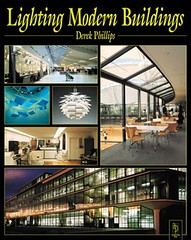
Derek Phillips, "Lighting Modern Buildings"
Architectural Press | 248 pages | 2000-08-07 | 0750640820 | PDF | 16.5MB
This is an important book, written by one of the top lighting designers in the country. Written at the end of a career as an architect and lighting designer, the book draws on the experience gained while living through a period of intense lighting development, from 1956 up to the millenium. It bridges the gap between the present day architect and lighting engineer, from the viewpoint of the 'independent lighting designer'.
'Lighting Modern Buildings' documents the part played by the independent lighting designer, leading to a greater understanding by architects and lighting engineers of the importance of lighting in architectural design.
The book starts with an exploration of the basic human needs of vision and the perception of our exterior world...the intellectual and the physical...since this is what lighting is all about. To do this, it is necessary to trace the development of daylight from earliest times up to the present day; the starting point for any lighting design is the 'natural' source.
Whilst an essential understanding of the role of daylight is the beginning, a knowledge of the various forms and properties of artificial light is essential; not only at night but during the day. In early buildings, there was one form of light - daylight - during the day and another - artificial - at night. No attempt was made to integrate the two. The situation today is different; there are many reasons for this, not least in the possibilities of modern structure. The book therefore has extensive coverage of day and night lighting and how it is designed to provide optimum solutions in building design.
A major portion of Derek Phillips' book is devoted to 'design'. Sufficient technical detail is provided in the book to permit an understanding of the design principles of each scheme. Schemes illustrated vary from small domestic buildings, churches and workplace, to those devoted to leisure and sport. At the end of each section a series of conclusions are drawn leading to a philosophy of lighting design.
* Learn how to design optimum lighting solutions
* Understand how to bridge the gap between architects and lighting engineers
* Discover how to integrate natural and artificial light sources
Download:
4shared.com//Lighting_Modern_Buildings.pdf
or
rapidshare.com/files/120712960/Lighting_Modern_Buildings.rar
Không có nhận xét nào:
Đăng nhận xét